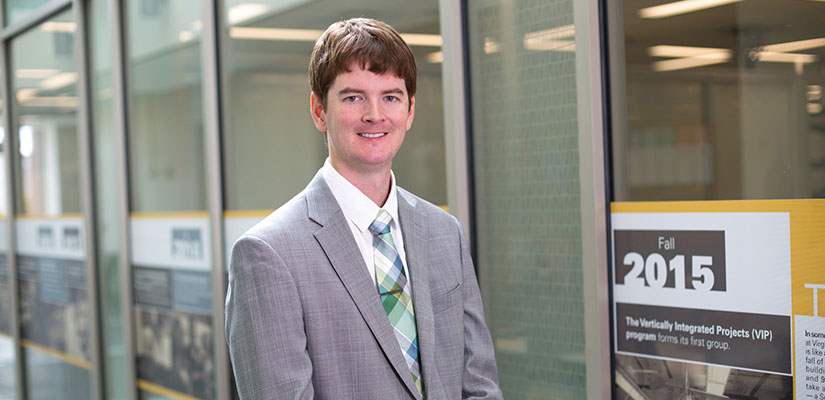Nathaniel Kinsey, Ph.D., assistant professor in the Department of Electrical and Computer Engineering at the Virginia Commonwealth University College of Engineering, is investigating methods to make information transfer across the internet faster through cutting-edge research called plasmonics. Plasmonics harnesses the interaction between an electromagnetic field and free electrons in a metal, often for use in sensing and information technology applications.
A paper on this topic by Kinsey and co-authors from Institute of Electromagnetic Fields in Zurich, Switzerland; University of Washington and Purdue University appears in the April 26, 2018, issue of the journal Nature. Nature is among the most cited scientific journals, making it one of the world’s top academic resources.
The study, titled 'Low-loss plasmon-assisted electro-optic modulator,' offers a method to reduce losses associated with plasmonics. Metals used for plasmonic applications produce heat, which results in a loss of energy. The research team demonstrates that these losses can be mitigated by a process called “resonant switching.” Resonant switching controls the application of light to a plasmonic chip. By allowing light to interact with the plasmonic device only in the device’s “off” state (in resonance), resistive, heat and energy losses are reduced while increasing the speed. Resonant switching has the potential to improve the performance of internet-based technologies and services such as media streaming, video communications and cloud storage.
VCU Engineering Researcher’s Study to Power Next Generation Optical Telecommunications Published in the Journal Nature
April 27, 2018
